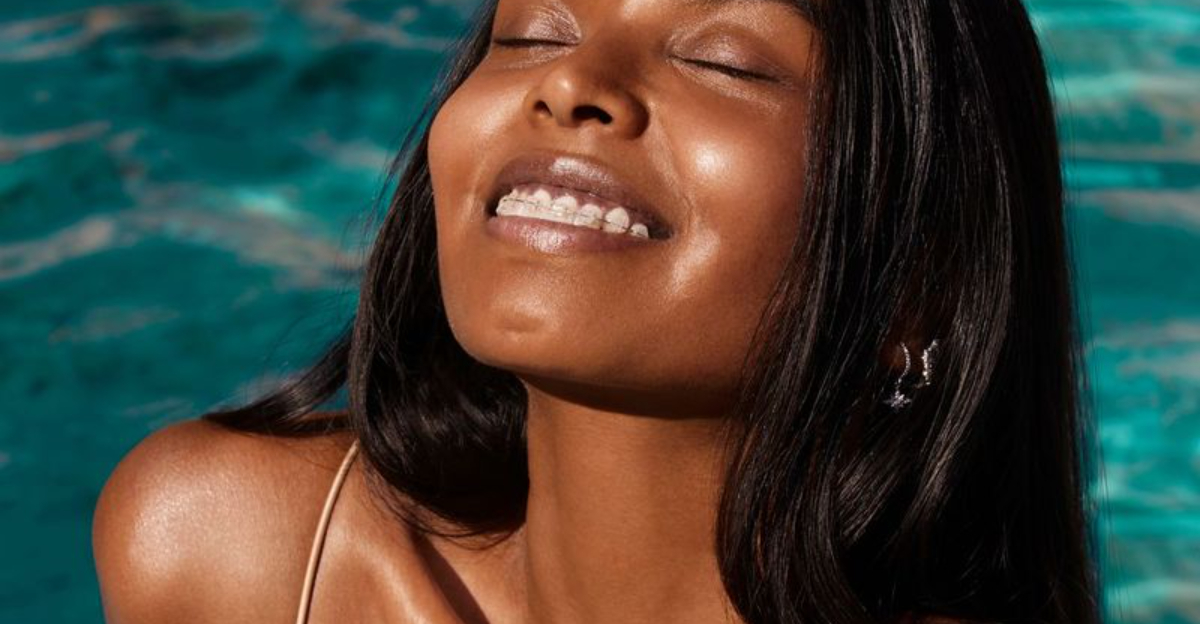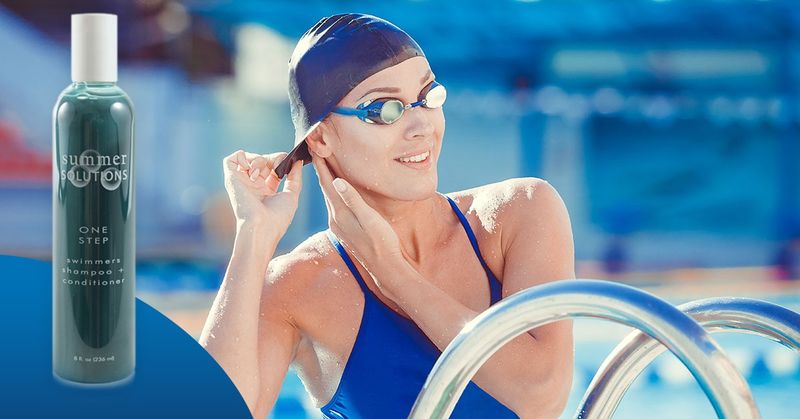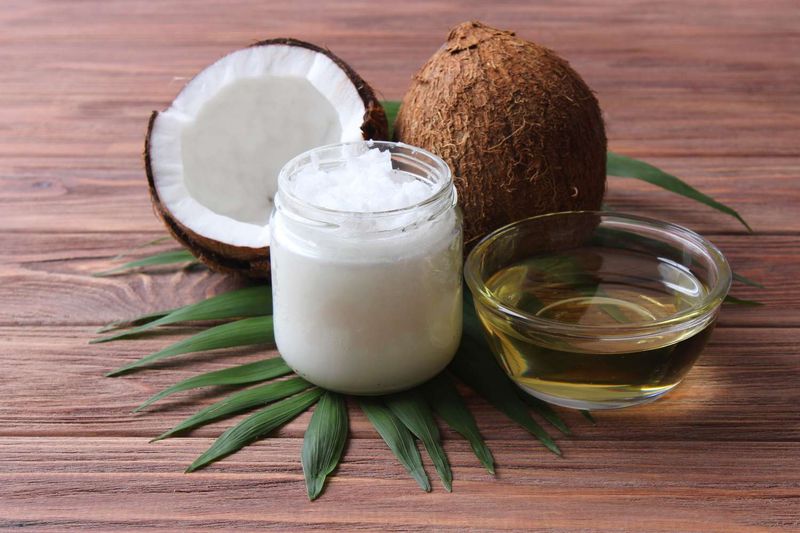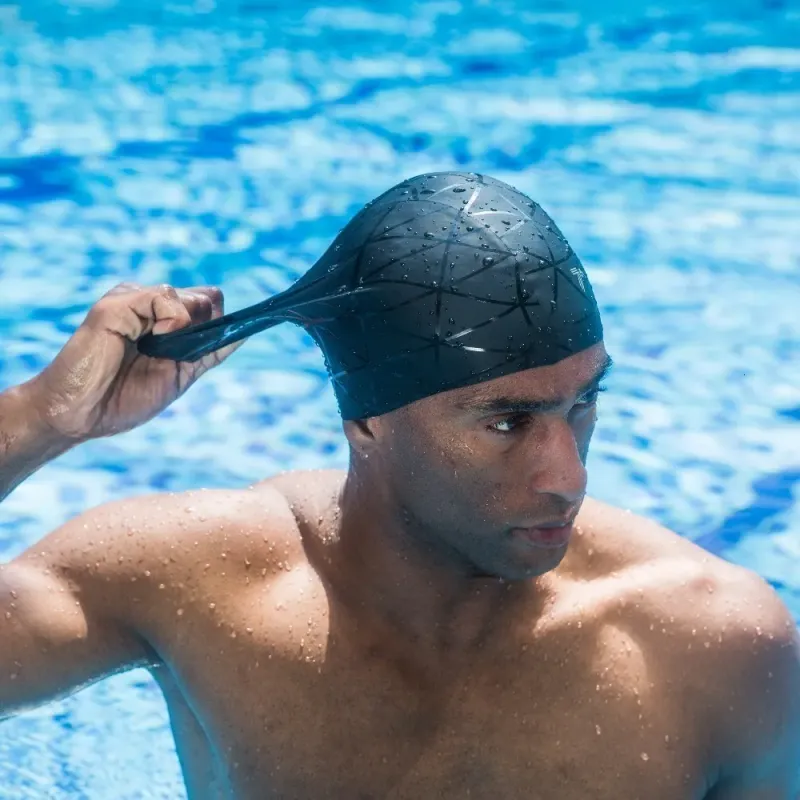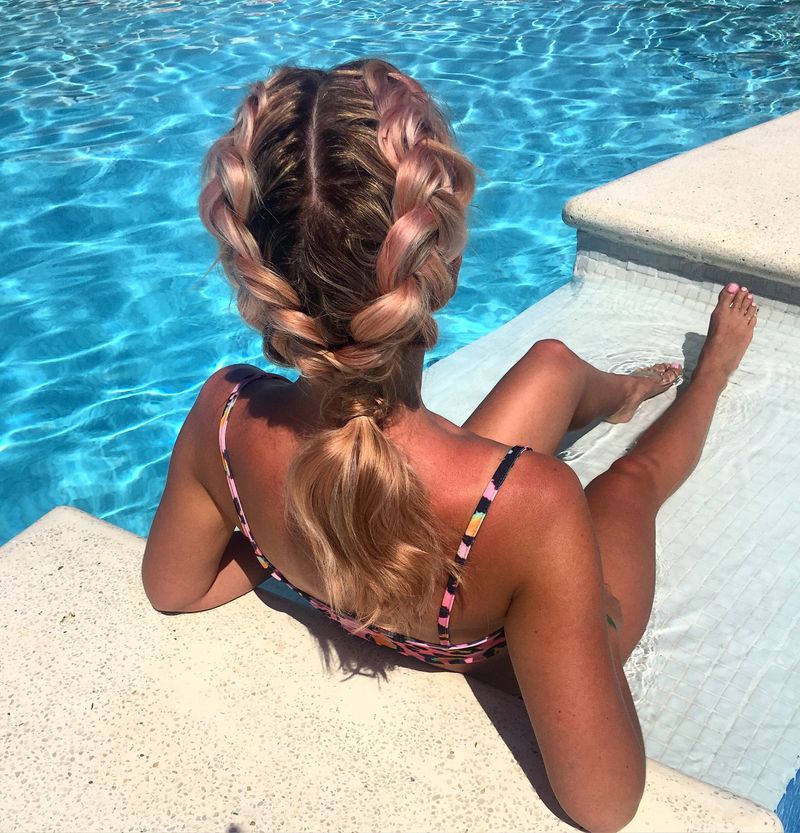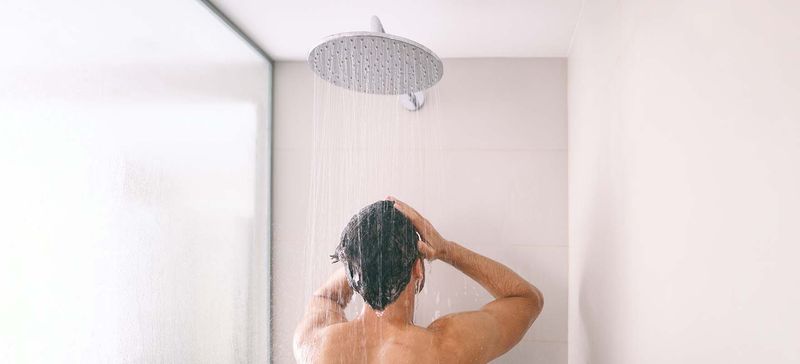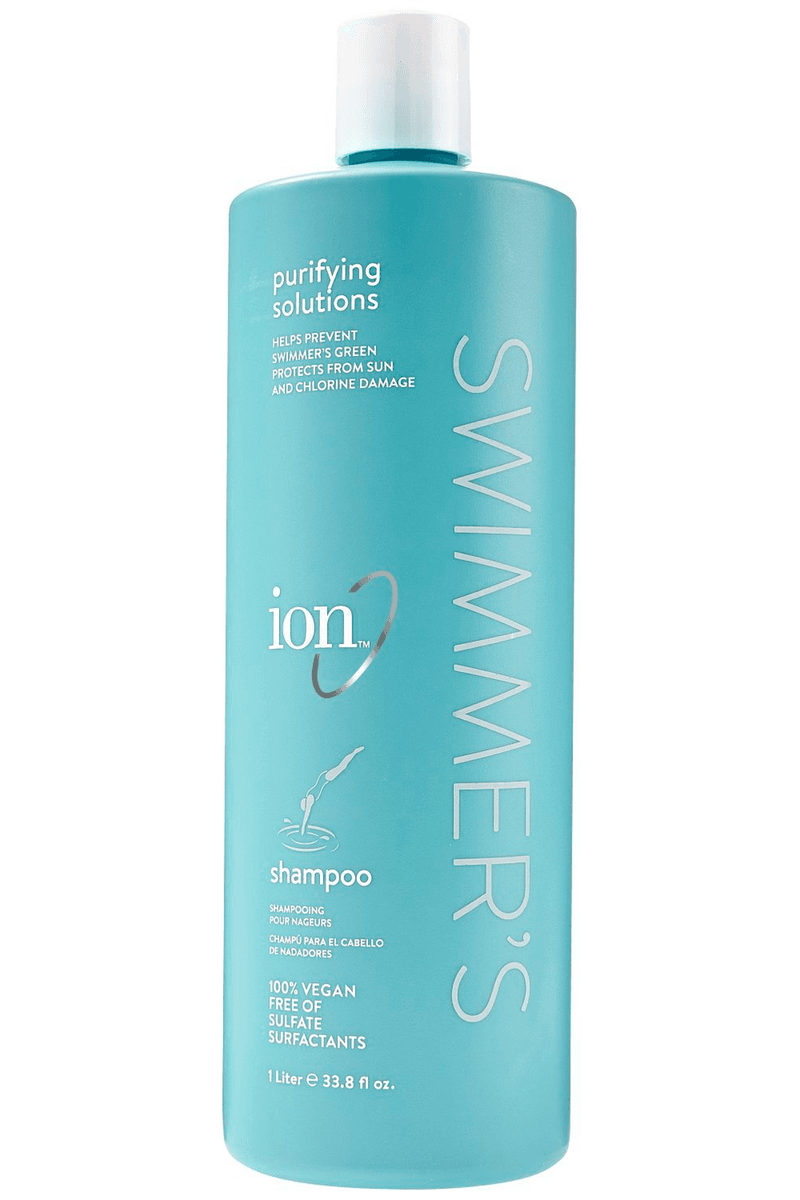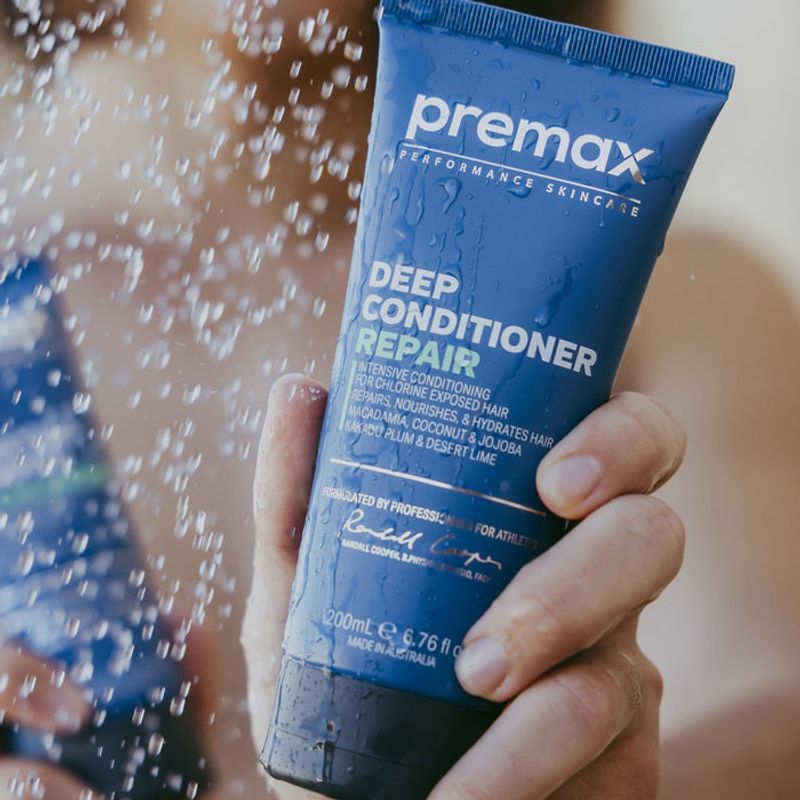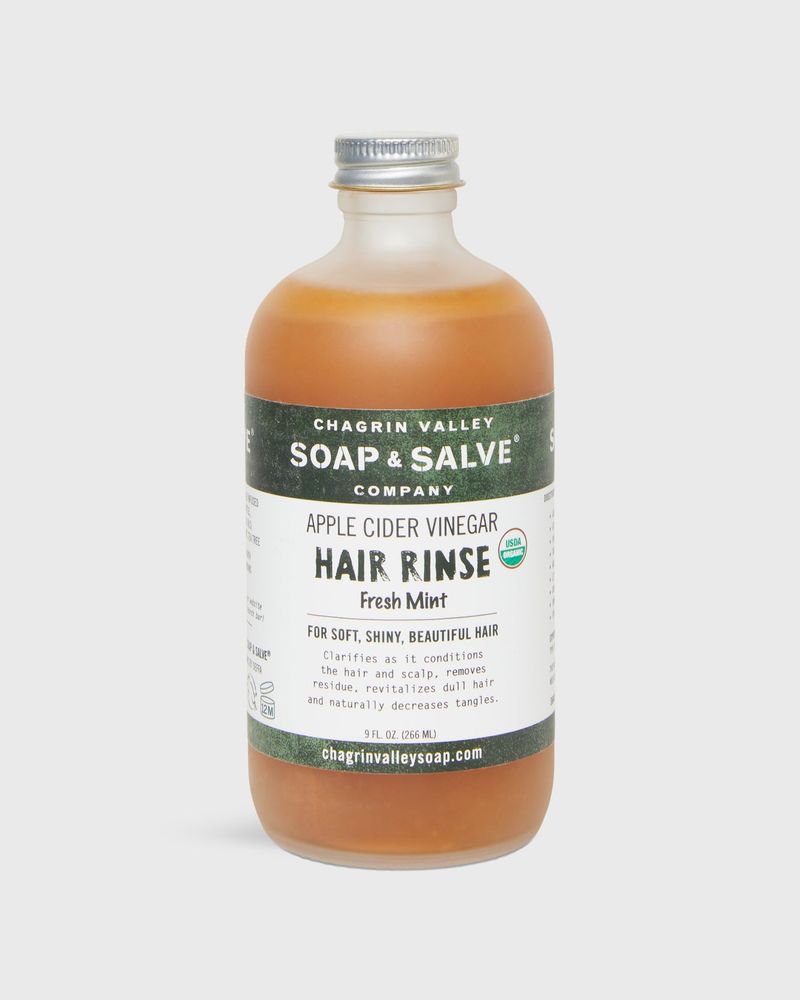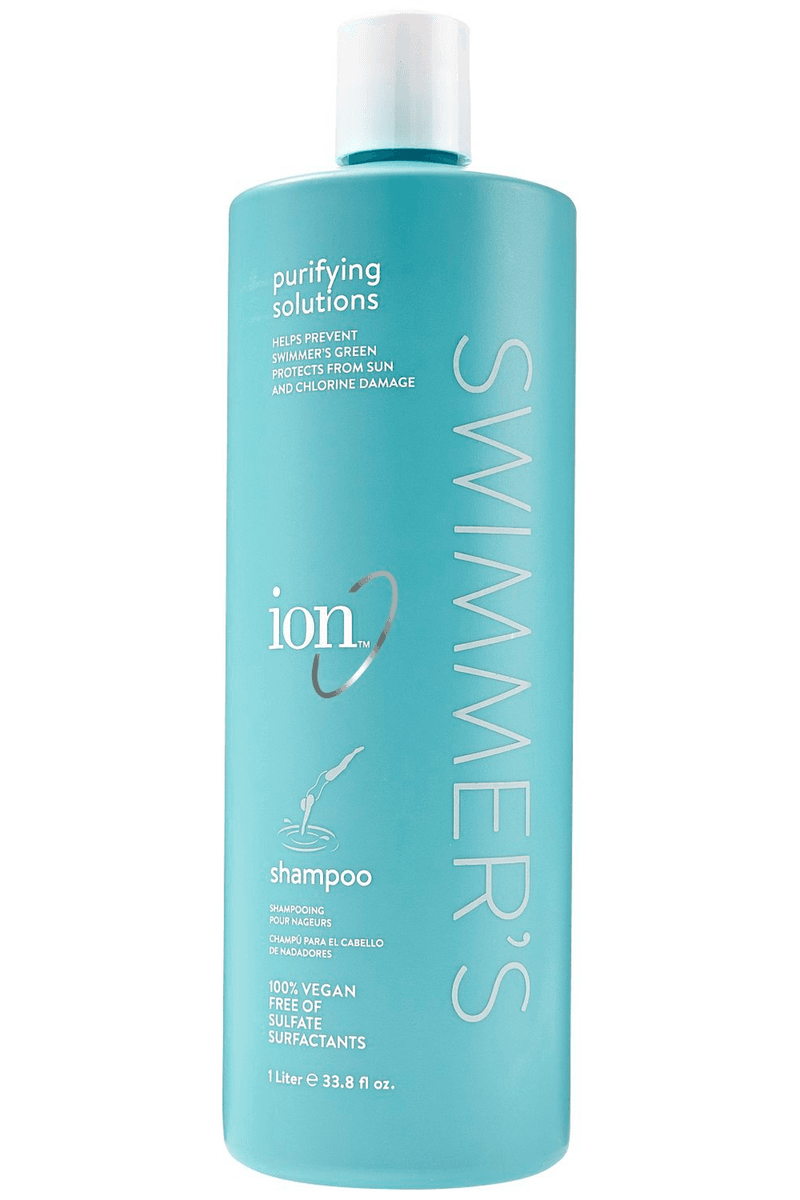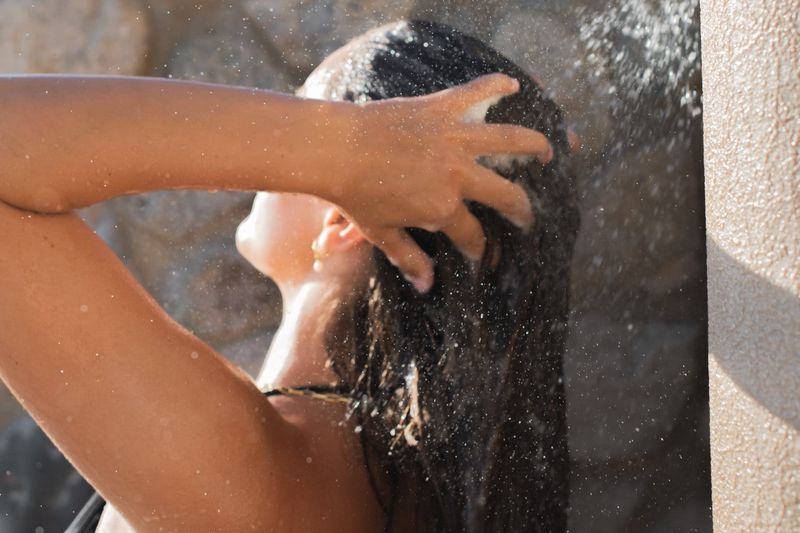Swimming is a fantastic exercise, but chlorine and saltwater can wreak havoc on your hair. Daily swimmers often notice dryness, breakage, and color fading if they don’t take proper precautions.
Protecting your locks doesn’t have to be complicated – with these simple strategies, you can enjoy your swim while keeping your hair healthy and strong.
1. Wet Your Hair First
Pre-soaking your hair with clean water creates a protective barrier. When your hair is already saturated, it absorbs less chlorinated or salt water during your swim.
Related: -7 Straight-Hair Problems No One Talks About And 8 Easy Fixes That Shine
Think of dry hair like a sponge – it’ll soak up whatever it contacts first!
2. Apply Leave-in Conditioner
Slather your strands with a rich leave-in conditioner before hitting the water. This creates an extra shield between your locks and harsh pool chemicals.
Natural oil-based products work especially well for this protective technique.
3. Coconut Oil Hair Mask
Coconut oil works wonders as a pre-swim treatment! Its hydrophobic properties naturally repel water while nourishing your strands.
Simply warm a small amount between your palms and distribute evenly from roots to ends before swimming.
4. Rock a Swim Cap
Swim caps aren’t just for competitive swimmers! These waterproof barriers keep most of your hair dry and protected from chemical exposure.
Silicone caps tend to be gentler than latex ones, especially for those with longer hair.
5. Braid It Up
Braiding your hair creates a compact style that minimizes tangling and exposure to pool water. Tight braids work best for keeping hair contained and protected.
For extra protection, apply some oil or conditioner before braiding!
6. Rinse Immediately After Swimming
Make a beeline for the shower the moment you exit the pool. Rinsing your hair removes chlorine, salt, and other chemicals before they can cause lasting damage.
Even plain water helps if you don’t have shampoo handy!
7. Use Clarifying Shampoo
Regular swimmers need a powerful cleanser to remove chemical buildup. Clarifying shampoos strip away residue that normal shampoos might miss.
Limit use to 1-2 times weekly to prevent over-drying your already stressed strands.
8. Deep Condition Regularly
Swimming saps moisture from your hair, making deep conditioning essential. Weekly treatments restore hydration and repair damage from chlorine exposure.
Look for products specifically formulated for swimmers or damaged hair for best results.
9. Create a Vinegar Rinse
Apple cider vinegar naturally removes chlorine and restores your hair’s pH balance. Mix one part vinegar with four parts water for a post-swim rinse that works wonders.
Don’t worry – the vinegar smell disappears once hair dries!
10. Try a Swimmers’ Shampoo
Specialized swimmers’ shampoos contain ingredients specifically designed to remove chlorine and mineral deposits. These formulas help prevent the dreaded green tint that can affect blonde hair.
Many also contain extra moisturizers for parched strands.
11. Protect Color-Treated Hair
Colored hair needs extra protection from pool chemicals. UV-protective products and swimming caps are your best defense against fading and discoloration.
Red and blonde dyes are particularly vulnerable to chlorine damage, so take extra precautions!
12. Limit Heat Styling
Your hair already battles chlorine damage – don’t add heat stress too! Cut back on blow dryers, straighteners, and curling irons when you’re swimming regularly.
Air-drying or gentle towel-drying methods give your strands a much-needed break.
13. Wear a Sun Hat
Outdoor swimmers face double trouble: pool chemicals plus sun damage! Wide-brimmed hats shield both your hair and scalp from harmful UV rays.
Look for quick-drying materials that won’t get ruined if they get splashed.
14. Schedule Regular Trims
Frequent swimming can lead to split ends and breakage. Getting your hair trimmed every 6-8 weeks removes damaged ends before problems spread up the hair shaft.
Even just a quarter-inch trim makes a big difference!
15. Choose the Right Hair Ties
Elastic bands can cause breakage, especially on wet hair. Soft fabric hair ties or silicone bands minimize damage when securing your swimming style.
Avoid metal clasps or rubber bands that can snag and tear strands.

